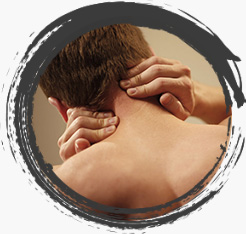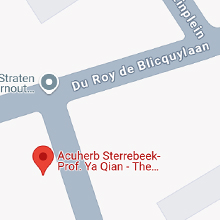
Pain & Injury
PAIN
Acupuncture resolves pain by affecting several pain pathways and healing responses at the same time:
- raise endorphin levels and diminish the nervous system’s pain response
- decrease inflammation and swelling
- relax muscles and stop spasms
- increase circulation to the local area
Arthritis
Acupuncture can increase blood circulation to joints, and thus their absorption of calcium as well as the removal of noxious elements. It can also increase the production of synovial fluid to keep joints better lubricated. In addition it reduces inflammation and swelling as it stops pain. These well docu-mented effects of acupuncture are what allow it to treat arthritis. Acupuncture treatments can there-fore eliminate the symptoms of arthritis and slow down the progression of the disease. And it is able to do this without any of the long-term side-effects associated with most anti-inflammatory drugs used for arthritis.
When considering acupuncture for the treatment of arthritis there are some important considera-tions to keep in mind. The fastest results will be seen in patients with a relatively short history of ei-ther type of arthritis. Those with chronic cases of 10 or more years with arthritis will need 8 to 10 acupuncture treatments to notice a positive change in their condition. The longer a person has ar-thritis, the longer it may take to eliminate the symptoms. While acupuncture cannot reverse any de-formity of the joint that has already occurred, it can slow down and stop further destruction and ad-ditional negative symptoms.
Back Pain
Acupuncture is best known for its ability to stop pain in general. It is effective in treating both acute and chronic back pain because it lessens the pain response locally as it relaxes nearby muscles. A negative pain cycle is broken when muscle spasms stop, adjacent muscle groups no longer com-pensate, range of motion then increases as the pain levels decrease. Acupuncture accomplishes this by:
-relax muscles: which slows spasms until they release
-decrease local inflammation by increasing local blood circulation
-reduce swelling
-stimulates the release of natural endorphins that diminish the pain response
Carpal Tunnel Syndrome
Acupuncture is often a successful treatment for carpal tunnel syndrome. It aims to decrease the local swelling and inflammation in the carpal tunnel itself, while relaxing the muscles of the forearm. There are several different acupuncture treatments for carpal tunnel syndrome, including local needling, the use of electrical stimulation, moxibustion and distal needling (or needling connected but distant parts of the body). The technique and treatment chosen by an acupuncturist depends on a person’s body type and related circumstances (ex. history of injury, arthritis, circulation, etc.).
Depending on the severity of the symptoms, a person typically receives biweekly acupuncture treatments and often notices an improvement in the first two weeks of treatment. Success with ac-upuncture depends greatly on a person’s ability to decrease or stop any repetitive motion that may exacerbate the condition while undergoing treatment. This allows the pressure on the median nerve to be eliminated without reintroducing it. Otherwise acupuncture will decrease the symptoms but not adequately treat the source. While individual circumstances influence the length of treatment, acu-puncture does successfully treat mild to severe symptoms and has no negative or lingering side-effects.
Fibromyalgia
Currently, modern medicine has very few options for the FM patient. NSAID’s (non-steroidal anti-inflammatories, such as Tylenol or Advil), muscle relaxants and anti-depressants can be prescribed but they often are minimally effective for FM sufferers and have potential side-effects.
Acupuncture has been determined by the World Health Organization to be effective in the treat-ment of chronic pain and has listed Fibromyalgia as one of 40 different conditions effectively treat-ed by acupuncture.
Headaches
Several clinical studies have shown acupuncture to be an effective option for treating chronic headaches. In one study published in the March 15th issue of the British Medical Journal research-ers randomly divided 401 adults with chronic headaches into 2 groups. One group received stand-ard medical care while the second group received 12 acupuncture treatments over a three month span in addition to standard medical care. One year after treatment those who received acupunc-ture:
Experienced 22 fewer days with headaches
Made 25% fewer visits to their doctor
Took 15% fewer days off sick from work than the control group
Used 15% less medication
Local research by Remy Coeytaux, MD (assistant professor of family medicine at the University of North Carolina School of Medicine) demonstrated similar findings. Dr. Coeytaux’s study, published in the October 2005 issue of the journal Headache, found that overall those who received acupunc-ture along with standard medical care were 3.7 times more likely to report less suffering from chronic headaches compared with those who received standard medical treatment alone.
Heel Pain
Acupuncture can help to relax the muscles and connective tissue of the foot, decrease inflamma-tion and stimulate the body to release endorphins. This moderates the pain response as healing ac-celerates.
It is important to recognize and adjust any lifestyle factors that may contribute to the heel pain. De-creasing physical activity, limiting the amount of time spent standing or addressing weight issues is often helpful. In addition, stretching the calf muscles on a regular basis and examining one’s foot-wear is useful.
Combining acupuncture, lifestyle adjustments and limiting the amount of time standing can provide long lasting relief from heel and foot pain. Yet often people compensate for the heel pain by walking differently and changing their posture. This leads to pain in other parts of the body such as the legs, hips and lower back. Acupuncture treatments can help “re-balance” the body by releasing tension in all related parts of the body while focusing on the source of the problem – the feet.
INJURIES
Acupuncture & Sports Injury
Acupuncture has a very successful record with sports injuries. Many professional sports teams have acupuncturists on staff to decrease healing times and resolve stubborn ailments. But the use of acupuncture to treat acute injuries from intense or repetitive physical activity began centuries ago. It was and still is one of the primary means of quick healing for the martial arts. Specific acu-puncture styles and techniques were developed to stop pain and dramatically increase recovery time. This tradition continues today and its use has expanded into competitive athletics that result in similar injuries.
How Does Acupuncture Help?
Acupuncture is an effective treatment for Sports Injuries because it reduces pain, increases range of motion, increases recovery and healing time, and strengthens weakened parts of the body. These effects are accomplished during treatment because acupuncture:
- decreases inflammation
- reduces swelling
- relaxes muscles and relieves spasms
- decreases bruising
- lowers the body’s pain response
- improves local blood circulation to increase delivery of nutrients and removal of noxious elements
Tennis Elbow&Golf Elbow
By the insertion of needles at that place, one makes a micro-trauma (microscopic injury) in which one sets a regeneration process in motion. In addition, acupuncture release the substanc-es(neurotransmitters) in the body that are also found in anti-inflammatories. therefore, the use of analgesics and anti-inflammatory, together with acupuncture increases the chance of cure.
Tendons are inflamed easily when they are weakened. they can load less well. via acupuncture we will also increase the energy supply of the tendons by acting on the liver energy. the liver energy is responsible for making sure they are stronger and they can load more. In that way, the inflamma-tion will not quickly return.
So acupuncture works not only symptomatic, but also takes the underlying cause.
via acupuncture we can:
- stop the inflammation.
- relieve the pain.
- effect by other locations, such as the neck , if the cause is there.
- make the tendon stronger.
Shoulder Complaints
the most common causes of shoulder pain are:
- tendonitis
- bursitis
- impingement syndrome
- arthrose of the shoulder joint
Recent studies show the good results with acupuncture. On one hand acupuncture release substances (neurotransmitters) that stop inflammation. these are the same substances that can be found in anti-inflammatories. In addition, acupuncture stimulates the flow of energy and blood in the meridians of the shoulder. pain in Chinese medicine is a stagnation of energy and blood. by placing very thin needles of the acupuncture ensures that the stagnation of blood and energy disappears. the consequence is that also the pain disappears. Another advantage is that the structures of the shoulder are fed at the same time. so we get a double function. by acupuncture pain disappears and the shoulder joint is stronger. the meridians of the shoulder also walk to the neck, elbow and hand. by treating the shoulder so we also operate indirectly on the entire meridian. Hence, the acupuncture points very often pricks at the hands in order to act on the shoulder and neck area.
Knee Osteoarthritis
Movement and certainly acupuncture in milder forms and in an early stage, are used as a therapy. in this way the joint capsules remain flexible.
Acupuncture can also slow down or even stop the degenerative processes like inflammation effectively. for people who suffer from weather sensitivity, and in the fall and winter have more knee problems, acupuncture can also help.
The medication which combat the inflammatory processes, are called NSAIDs (non inflammatory drugs). the use of some anti-inflammatory drugs can give damage to the gastric mucosa. Acupuncture is therefore a useful alternative treatment for patients who actually suffer from stomach upset.
acupuncture may offer an alternative solution responsibly, without side effects to treat patients with knee osteoarthritis. Knee osteoarthritis can be treated at any stage with acupuncture. Knee osteoarthritis can not be cured, but the symptoms related to knee osteoarthritis are much reduced.
Scientific research has shown that acupuncture is useful in the treatment of pain in knee osteoarthritis. In one of the largest studies that have been done so far, has shown that acupuncture is useful for treating pain in knee osteoarthritis. In a study with thousands of patients treated with 15 acupuncture sessions in 3 months, paid by the German health insurance, showed that after 3 months and after 6 months significant improvement on the level of pain, disability, and life quality, than the control group.
According to another scale study at the universities of Munich and Zurich, acupuncture would indeed be an effective treatment for rheumatic pains. the researchers asked 736 patients with chronic pain due to osteoarthritis be treated with acupuncture. both immediately after treatment and six months later, the patients reported less pain and greater mobility of the knee or hip joint.
Whiplash
Acupuncture works well with pain. according to the view of traditional chinese medicine, pain arise by not properly flow of energy and blood. all tissue structures in the neck have been changes through the stretch and subsequent compression from the energy and blood stagnation . By restoring this stagnation through puncturing certain points on your body and in the painful zones , acupuncture restores the energy and blood flow and the pain disappears. if you suffer from whiplash complaints for a long time, it is also helpful to contact your acupuncturist because it may also positively affect any additional complaints mentioned.

